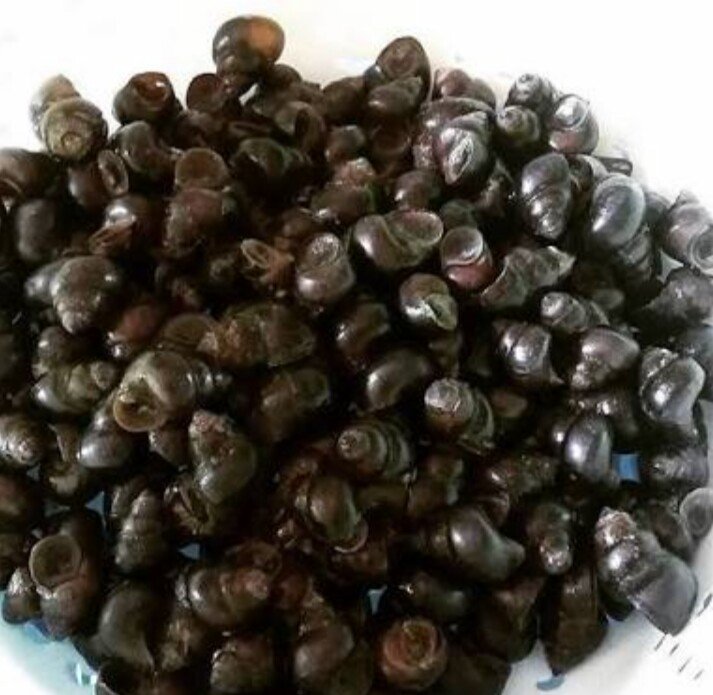
Haliling is a kind of small conch that lives in water, blackish color, habits of life in agricultural fields. Haliling can be consumed as a side dish to eat, it tastes savory and contains high enough nutrients.
Haliling is a type of snail whose existence is very abundant in South Kalimantan with the production area of paddy fields 235.677ha. Haliling usually live in rice fields and is on the sidelines of rice plants. Haliling is not only living on the edge but also can live in swamps, river banks and irrigation. Haliling breeds by spawning rapidly during the mating season of the rainy season.
Haliling is a kind of snail animal that live in inland waters, usually live in clusters or colonies that live in paddy fields. Haliling body protected by a hard shell that protects the body from outside interference, the shell consists of calcium and phosphorus. In addition haliling halogen as a source of animal protein that is not so well known by some people when it sees its nutritional content that contains 15% protein, 2.4% fat and about 80% water. Then haliling is no less nutritious with other animal protein and this is what makes haliling an alternative health food.
In south kalimantan found many haliling especially in the area of stagnant rice fields, haliling is a type of snail fields that live in paddy fields, habitat in the rice fields and places that also resemble rice fields, the water is quite clear, muddy and the water is not moving.
Haliling (the Bellamya clan) belongs to the Operculata group living in shallow, muddy waters and overgrown with water grass, with slow streams of water, such as rice fields, swamps, lake banks and small riverbanks. This animal prefers waters that are clear and clear water. Haliling is similar to a tutut, including the viviparidae conch. This can have a shell height of up to 40 mm in diameter from 15 to 25 mm, its shape is like a rounded cone with a greenish-brownish or yellowish color. The peak of the shell is slightly pointed; shell-edges blunted at the young; the number of 6-7 humps, rather convex, the big final nuisance. The mouth is round, the edges are continuous, not widened, generally black. Operculum slightly round, thin, slightly sunken, blackish brown.Haliling contains macronutrient nutrients in the form of high levels of protein in the body. The weight of the meat of an adult haliling tail can reach 4-5 grams. In addition to makronutrien, haliling body also contains micronutrients in the form of minerals, especially calcium that is needed by humans. With proper management, haliling can be a source of quality animal protein at a much cheaper price than beef, goat or chicken.
The people of south Borneo usually process by boiling by peeling the tip on the haliling shell and then incorporated spices, how to eat with a kiss on the bottom or the legs on the haliling and suck it until the meat halilng out.